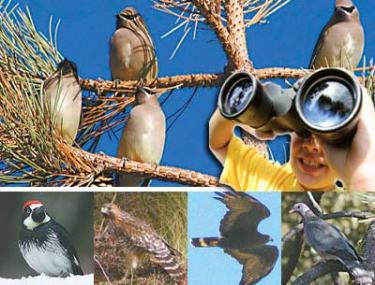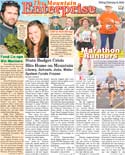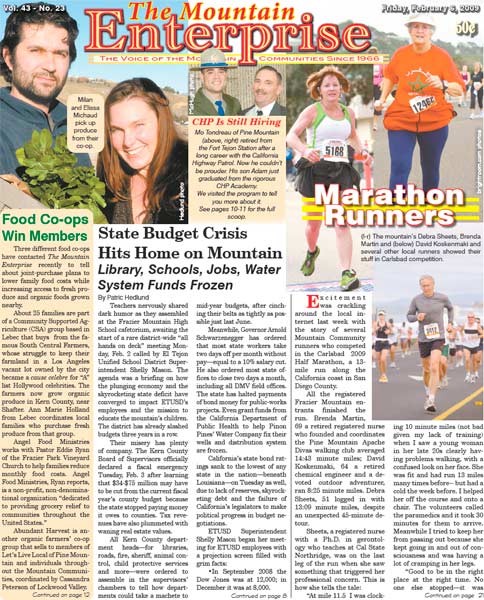
Top, you can usually hear the Cedar Waxwing?s high-frequency whistle before you see them. They love to eat juniper berries but will perch in large flocks high in any tree. Bottom (l-r) the Acorn Woodpecker, Cooper's Hawk, Zone-tailed Hawk and Band-tailed Pigeon are also seen in our area.
By Katy Penland, Mountain Enterprise staff
Would you like to become a “citizen scientist” to help count the wild birds in your backyard? The 12th Annual Great Backyard Bird Count (GBBC) this year falls over Valentine’s Day weekend, February 13-16.
The Great Backyard Bird Count is an annual four-day event sponsored by Cornell University’s Lab of Ornithology and National Audubon Society
Bird watchers of all ages count birds to create a real-time snapshot of where species are located across the continent during the winter.
Anyone can participate, from beginning bird watchers to experts. It takes as little as 15 minutes on one day, or you can count for as long as you like each day of the event.
It’s free, it’s a lot of fun, and it’s easy—and most importantly, it helps our wild birds.
During last year’s GBBC, more than 85,000 tally sheets were turned in from throughout North America.
They showed 634 species were seen, totaling more than nine million individual birds!
Don’t think you’ll see very many birds in your own backyard? You can pick any other spot you’d like—a neighbor’s feeder, a park, a greenbelt, a campsite in the forest, a stream or pond—as long as you can spend at least 15 minutes counting each day.
And we’re very lucky to live in Kern County. Five out of the last six years, it has won North America’s “Birdiest Inland County” contest (another “citizen science” project), logging an average of 250 species each year, so there are lots of different species to see.
In addition to counting birds, you can take photos of what you see and enter the photo contest for great prizes from bird feeders to binoculars as well as see your images posted on the internet.
For more information on how you can participate, print out handy tally sheets and a list of the birds we’re most likely to see in our part of Kern County this time of year, go to: www.birdsource.org/gbbc.
If you are a teacher who would like to have your class watch a section of school yard, you can find educational materials here: www.audubon.org/gbbc/materials.shtml.
Not sure you know enough about birds to be able to identify them? A great field guide for beginners and experts alike is the Field Guide to Birds of Western North America by David Sibley. It’s small enough to slip into a backpack but detailed enough to show (with arrows) what makes each species different from similar-looking birds. On its cover is a lovely Varied Thrush, another species that has been in my yard this winter but which I haven’t been able to photograph…yet.
Happy birding!
This is part of the February 06, 2009 online edition of The Mountain Enterprise.
Have an opinion on this matter? We'd like to hear from you.


